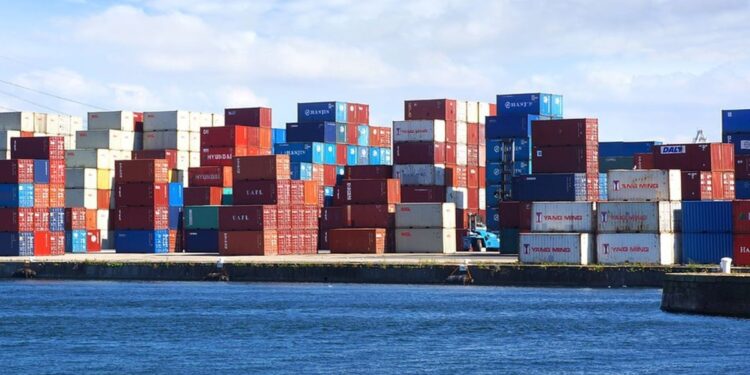Tunisian foreign trade figures confirm a growing imbalance between imports and exports. According to data published on Sunday by the National Institute of Statistics (INS), the trade deficit widened to -16,728.3 million dinars (MD) at the end of September 2025, compared to -13,497.4 MD a year earlier.
Exports in near stagnation
During the first nine months of 2025, Tunisian exports barely progressed, reaching 46,419.8 MD, a level almost identical to that of 2024 (46,404.6 MD). This stability, however, masks strong sectoral disparities.
The mechanical and electrical industries recorded an increase of +6.4%, as did mining, phosphates and derivatives (+8%). On the other hand, the agri-food industries fell by -14.6% due to the decline in sales of olive oil (2,915.2 MD against 4,038.5 MD), the energy sector plunged by -34.2% (decline in refined products: 610.4 MD against 1,466.2 MD), and the textile-clothing-leather sector declined slightly. (-1.3%).
Imports clearly accelerating
Imports continue to rise, reaching 63,148.1 MD against 59,902 MD during the same period of 2024. The increase is marked in capital goods (+16.2%), raw materials and semi-finished products (+8.1%) and consumer goods (+11.4%). Only energy (-11.8%) and food (-3.5%) products recorded a decline.
The European Union remains dominant
The European Union absorbs 70.3% of Tunisian exports, for a value of 32,622.6 MD (compared to 32,284.3 MD in 2024). Sales increased to Germany (+11.2%), France (+8.4%) and the Netherlands (+7.2%), but declined to Italy (-10.1%) and Spain (-20.3%).
Exports to the Arab world are also increasing: Libya (+7.4%), Morocco (+35.9%), Algeria (+11.6%) and Egypt (+33.5%).
On the import side, the EU represents 43.2% of the total (27,306.2 MD), up with France (+12.7%) and Germany (+8.6%), but down with Italy (-2.4%), Greece (-29.1%) and Belgium (-7.1%).
Outside Europe, Tunisia imports more from China (+29.4%) and Turkey (+17.7%), while its purchases decrease from Russia (-22.8%) and Ukraine (-36.5%).
A deficit dominated by the energy bill
The overall deficit of -16,728.3 MD remains driven mainly by the energy sector (-8,106.4 MD), followed by raw materials and semi-finished products (-4,990.8 MD), capital goods (-2,693.7 MD) and consumer goods (-1,557.4 MD).
Only the “food” group recorded a surplus of +620 MD.
Excluding energy, the deficit falls to -8,621.9 MD, while the energy balance is slightly lighter compared to 2024 (-8,106.4 MD against -8,422.1 MD).








